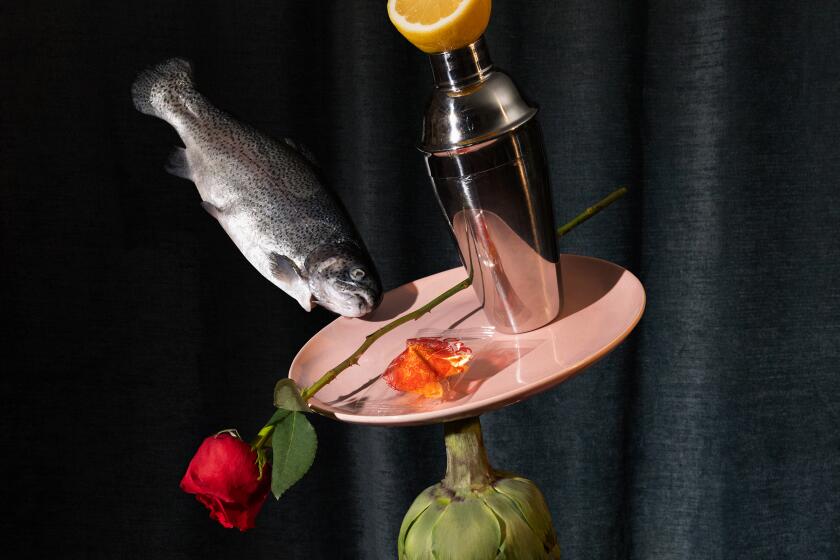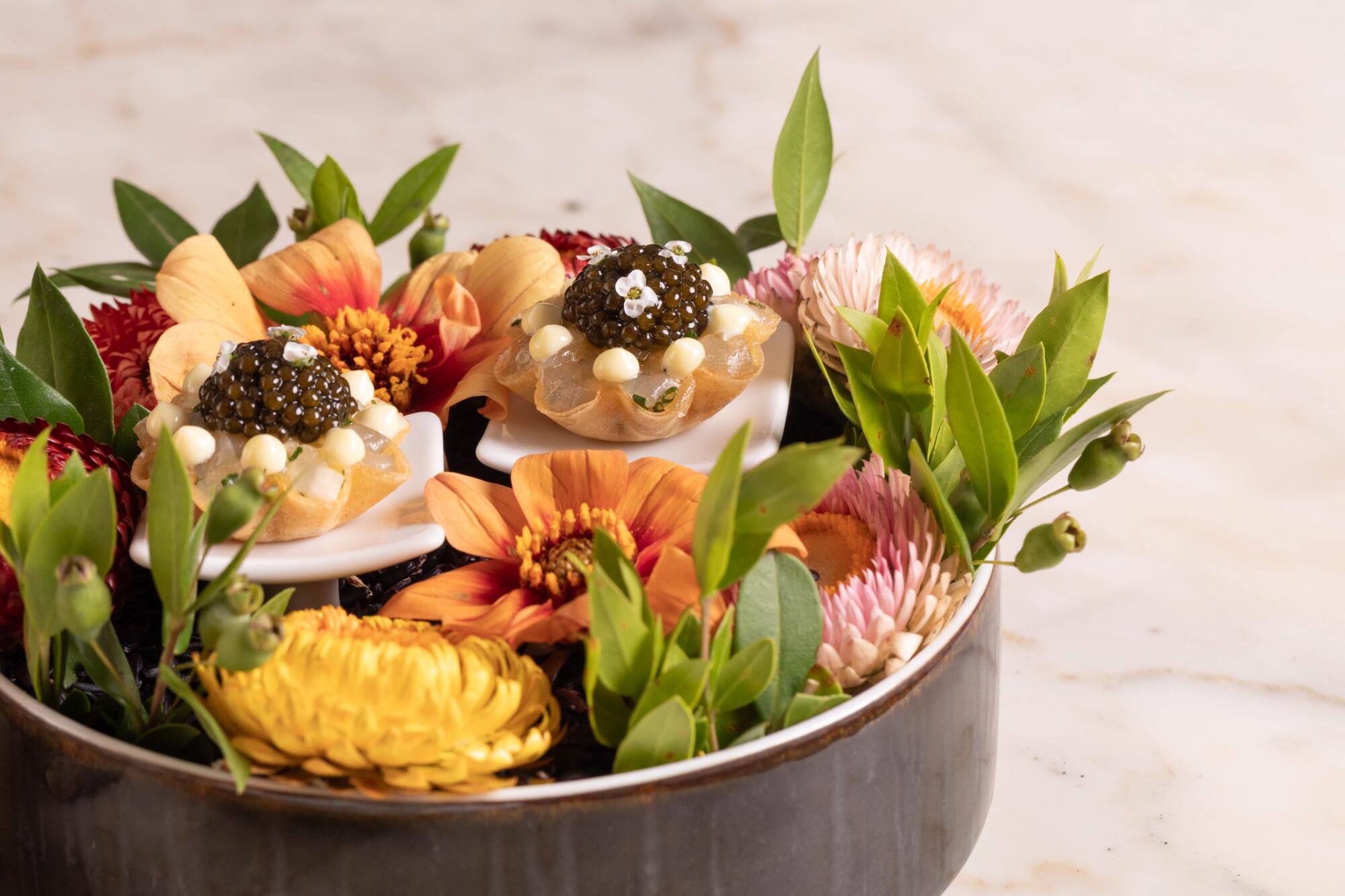
- Share via
- Mélisse in Santa Monica celebrates its 25th anniversary at a tough time for restaurants.
- Why has it lasted for so long? Chef Josiah Citrin’s ability to adapt, for one. Especially in the last three or four years.
- In August, Mélisse retained its two Michelin stars.
Early on a Sunday evening in July, a long line of smartly dressed guests wraps around the outside of Josiah Citrin’s California-French fine-dining restaurants Mélisse and Citrin in Santa Monica. Friends, family and fans are there to celebrate the 25th anniversary of Mélisse.
As the line balloons, Citrin appears in his chef whites and iconic beaded necklaces to usher them into the party with open arms, as if to say, “Welcome to my house!”
Inside, legendary restaurateurs, chefs and former Mélisse cooks pitch in: A.O.C.’s Suzanne Goin fries salt cod fritters topped with saffron aioli in the kitchen, Providence’s Michael Cimarusti serves crispy potatoes with crème fraîche and herbs in the dining room and Joan McNamara of Joan’s on Third and Michael McCarty of Michael’s Santa Monica mingle with guests.
The scene, not far from the Pacific Ocean in which Citrin grew up surfing, is a window into his life and a snapshot of the impact he and his restaurant have had on the city. When Mélisse opened in 1999, Citrin introduced L.A. to a new style of French dining, the kind that only a kid who grew up in Santa Monica could create — one rich with California produce.
“I can’t say French,” he told the L.A. Times in 1999. “Too many vegetables to be French.”
“When I was growing up in L.A., L’Orangerie and L’Ermitage were the big French restaurants in town,” says Goin, who opened her own acclaimed restaurant, the now-closed Lucques, in 1998 with Caroline Styne, and later the restaurants A.O.C., Caldo Verde and Cara Cara. “Josiah forged his own path — with the attention to detail and bells and whistles of fine dining but a focus on our local farmers and a local perspective that we had not really seen before.”
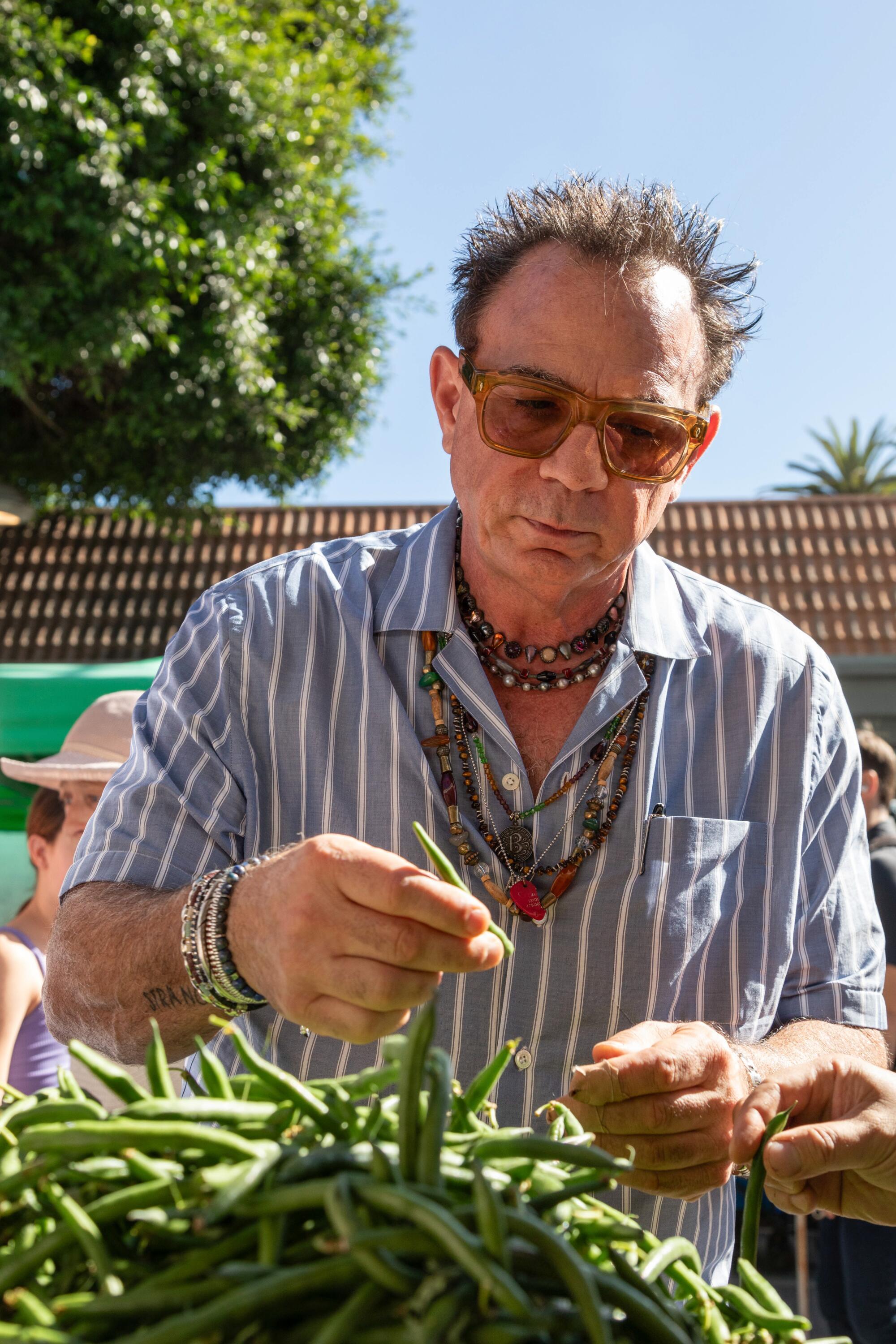
“I think he continued in a vein, what Jean Bertranou started at L’Ermitage, to really show the world that we have first-class, top-class French restaurants, which at that time were by far the most important ones,” says chef Wolfgang Puck.
Redefining California-French cuisine
Mélisse is one of the few remaining French fine-dining tasting-menu restaurants of its era. Yet it has thrived not as a bastion of ’90s California-French cuisine but instead because of Citrin’s openness to redefining what California-French food is. Only one dish from the original menu, his orange tomato soup with pistachio and strawberry sorbet, poured tableside, remains on the tasting menu.
In today’s restaurant landscape, it is a near impossible feat to reach 25 years in business; the past four years were particularly challenging due to months-long entertainment industry strikes, inflation and higher rent prices and labor costs. In the last few months, the struggle has hit Teresa Montaño’s Highland Park Spanish restaurant Otoño; Timothy Hollingsworth’s downtown dining destination Otium; and Walter and Margarita Manzke’s Manzke and Bicyclette.
In a tough restaurant economy, L.A. chefs are opening ambitious restaurants.
Citrin — whose restaurants also include modern grill Charcoal Venice, casual roast chicken restaurant Augie’s on Main, Openaire at the Line Hotel, reimagined retro steakhouse Dear John’s and old-school seafood spot Dear Jane’s — is no stranger to the ups and downs of the restaurant business. He also opened and closed a second Charcoal location on Sunset in West Hollywood and a Mélisse offshoot called Cafe Mélisse in Valencia in 2002.
With seven restaurants, he says that he works “eight” nights a week. He’s at Mélisse at least three of those nights and at the Santa Monica Farmers Market nearly every Wednesday morning.
The week after his party, Citrin, 56, turns heads as he strolls through the market, which he’s been frequenting since he was 17. “Congrats on 25 years, chef!” he hears from passersby, chefs, friends and farmers.
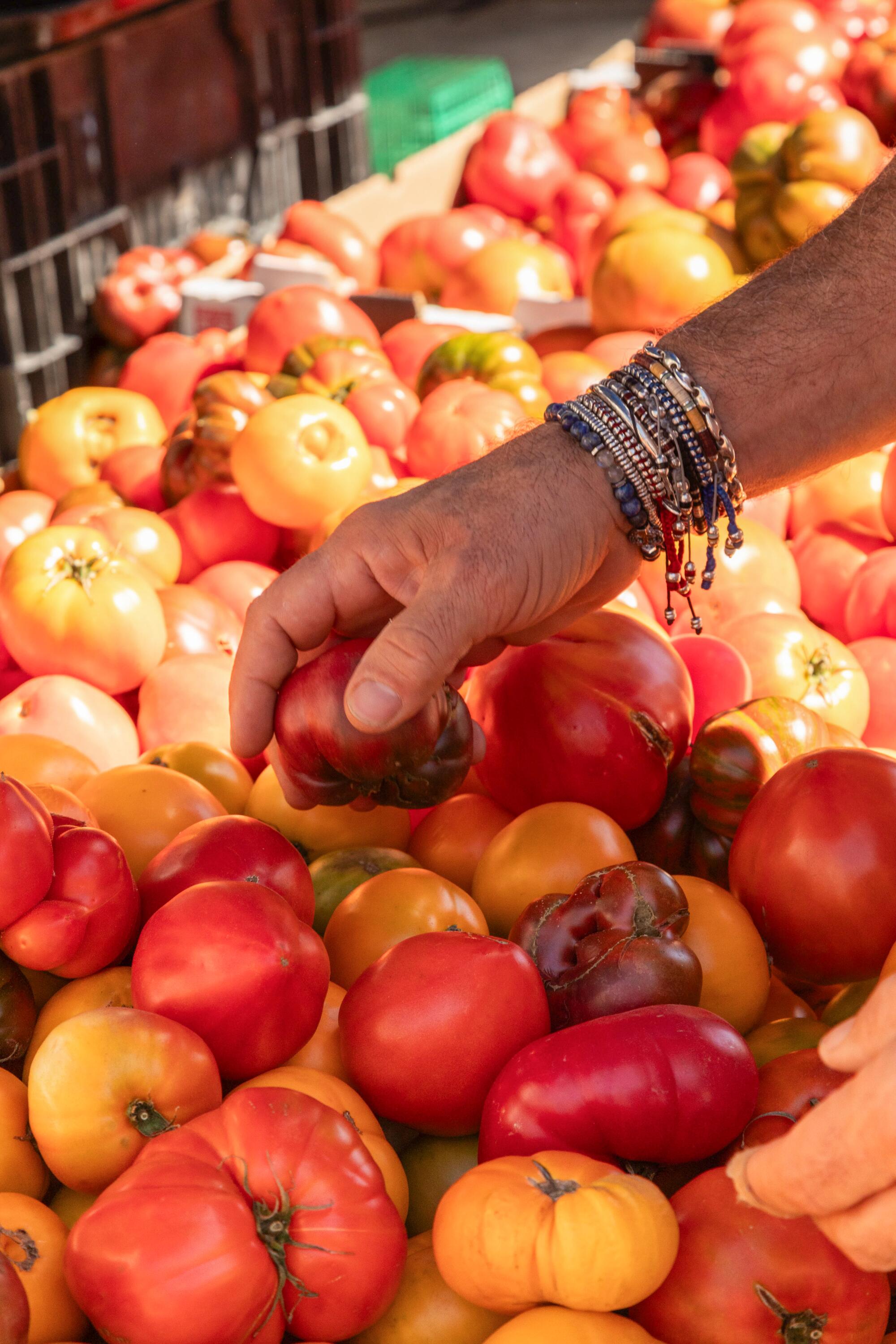
Citrin grew up in Santa Monica immersed in a life centered around food, with a French grandmother and a mother who worked as a caterer and ran the Southern California School of Fine Cooking on Third Street.
Citrin’s time after high school as a prep cook in 1986 at the Wave restaurant helmed by French chef Claude Segalthe Wave was a formative experience. “When I finally got to work in service one night, it was like, ‘Wow, this is it. This is where I’m supposed to be.‘”
Citrin moved to Paris at the age of 18 to train in traditional French cuisine before moving back to L.A. to work with Wolfgang Puck at Chinois on Main and with Joachim Splichal at Patina. With his love of French cooking, he launched JiRaffe in 1996 with childhood friend and chef Raphael Lunetta. Citrin left JiRaffe a few years later to open his dream fine-dining restaurant, Mélisse, with formal, tableside service, a move that was against trend at the time, which he says was veering away from fine dining.
‘The hardest challenge’
“I think learning to adapt has been the hardest challenge in the last three or four years more than the 20 years before that,” says Citrin, citing a massive increase in minimum wage since 2016. “Menu prices did not increase as dramatically over that time, and all of a sudden, that’s why you see all these restaurants having a hard time surviving and closing and not being able to make it that you think are doing well.”
When asked how he has made it work, he says, “I just run it tight and you have to be smart,” adding that he has raised prices. The tasting menu at Mélisse is currently $399 per person; in 1999, a five-course menu was $75, and the grand tasting was $125.
The Mélisse experience is unique: Guests enter through an entrance marked only by the words, “You are here.” They ring a bell and are led to what feels like a private room with only a handful of tables set with plates designed to look like vinyl records. What follows are nine amuses-bouches and 10 courses presented with balletic service that requires many hands on deck.
Why the industry is facing a uniquely tumultuous year, and what it means for restaurateurs, chefs and diners.
“It’s really paying attention to how you schedule, how many employees you have, the hours they work … all these little details,” he says. “Every little penny counts everywhere. I’ve just always been really aware of all of that.”
One thing is clear: After watching Citrin taste every single type of melon at the market before discovering the one with the sweetest, most concentrated cantaloupe flavor for his summer melon canapé, the quality of produce will never be the thing to cut. He will later transform the perfect melon into spheres compressed in their own juice, then infuse them with Gewurztraminer syrup, pair them with Alaskan Tanner crab meat dressed with kani miso and crab egg aioli and serve it on a tiny tart shell, topped with ice vinegar gel, shiso blossoms and finger limes from Citrin’s rooftop garden.
“We like to say we shop here instead of buy,” says Citrin. “You can just buy stuff at the market or you can shop, find the best ingredients, the best flavor.”
He mentions that when Mélisse opened, the option for chefs to reserve their produce in advance was limited; now it’s common. “We don’t really like to preorder, though. Because if you preorder, you don’t know what tastes best, right? I want to taste everything here.”
1
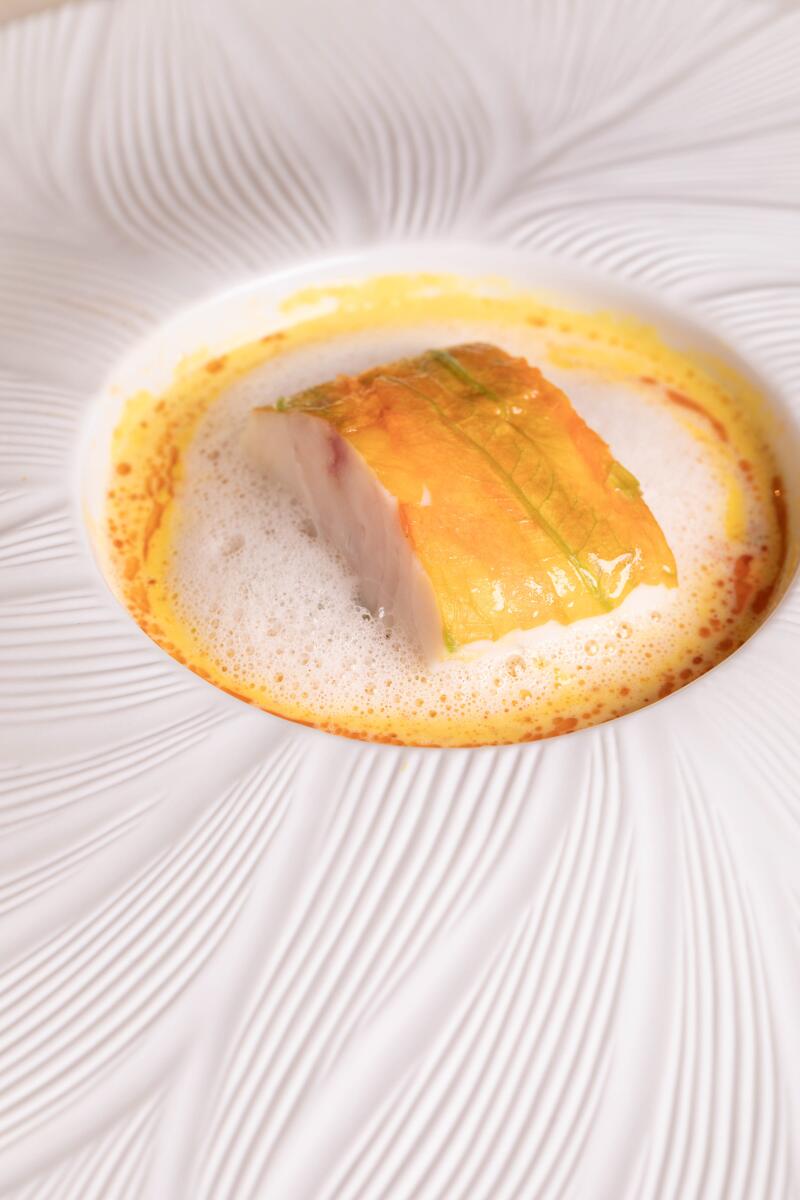
2
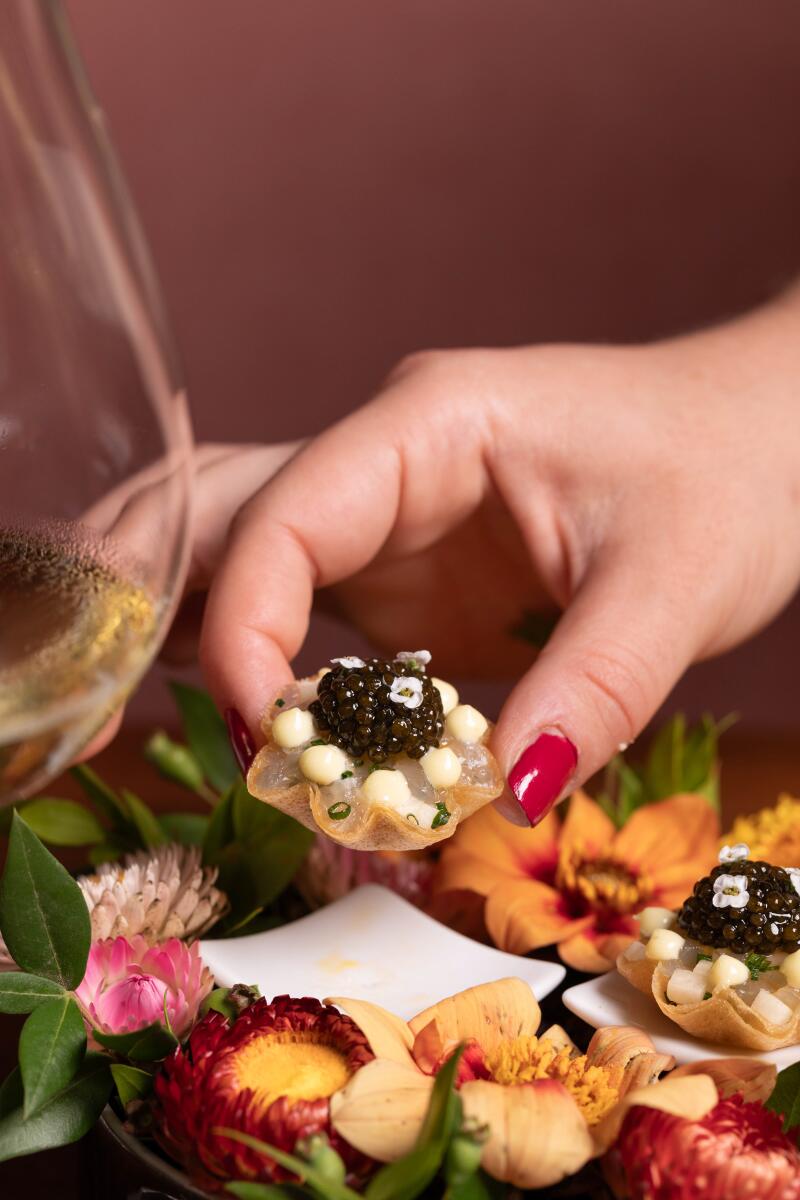
1. A dish of wild turbot, zucchini, saffron, mussel and rose at Mélisse. 2. Shima aji tart with yuzu kosho and caviar. (Jordana Sheara / For The Times)
When he reaches his team of four chefs from Citrin and Mélisse, headed by Mélisse chef Ken Takayama and two chefs from Charcoal, they have already amassed produce-filled crates stacked six feet high on a cart, with herbs and carrot tops spilling out the sides and boxes of bright orange nasturtiums on top. He reminds the young cooks from Charcoal not to buy too much.
“I’m obsessed with all that,” he says of keeping things streamlined. “It’s a big part of the success. It’s part of sustainability too. I don’t like the idea of wasting food.”
John and Katianna Hong of Yangban, who met while working at Mélisse more than a decade ago, recall Citrin’s precision when it comes to not wasting.
“Everything is so detailed and so precise that you know the exact amount of weight,” says Katianna. “When I’m leading a team and we’re packing for events, I still follow those guidelines.”
Citrin’s openness and ability to adapt to an ever-changing clientele and dining culture without sacrificing his ethos and approach also has contributed to his restaurant’s longevity.
“There were no cellphones allowed in Mélisse at one point, but now it’s not realistic,” he says, referring to the shift in dining etiquette and prevalence of social media.
But “I’m not going to compromise on quality. I’m not going to compromise on the food. I’m not on the service, on the experience to get there. I just don’t want to change that. That’s important to me. I keep that what it is. Even evolving to be more casual without tablecloths, all that, I still want to create this amazing experience.”
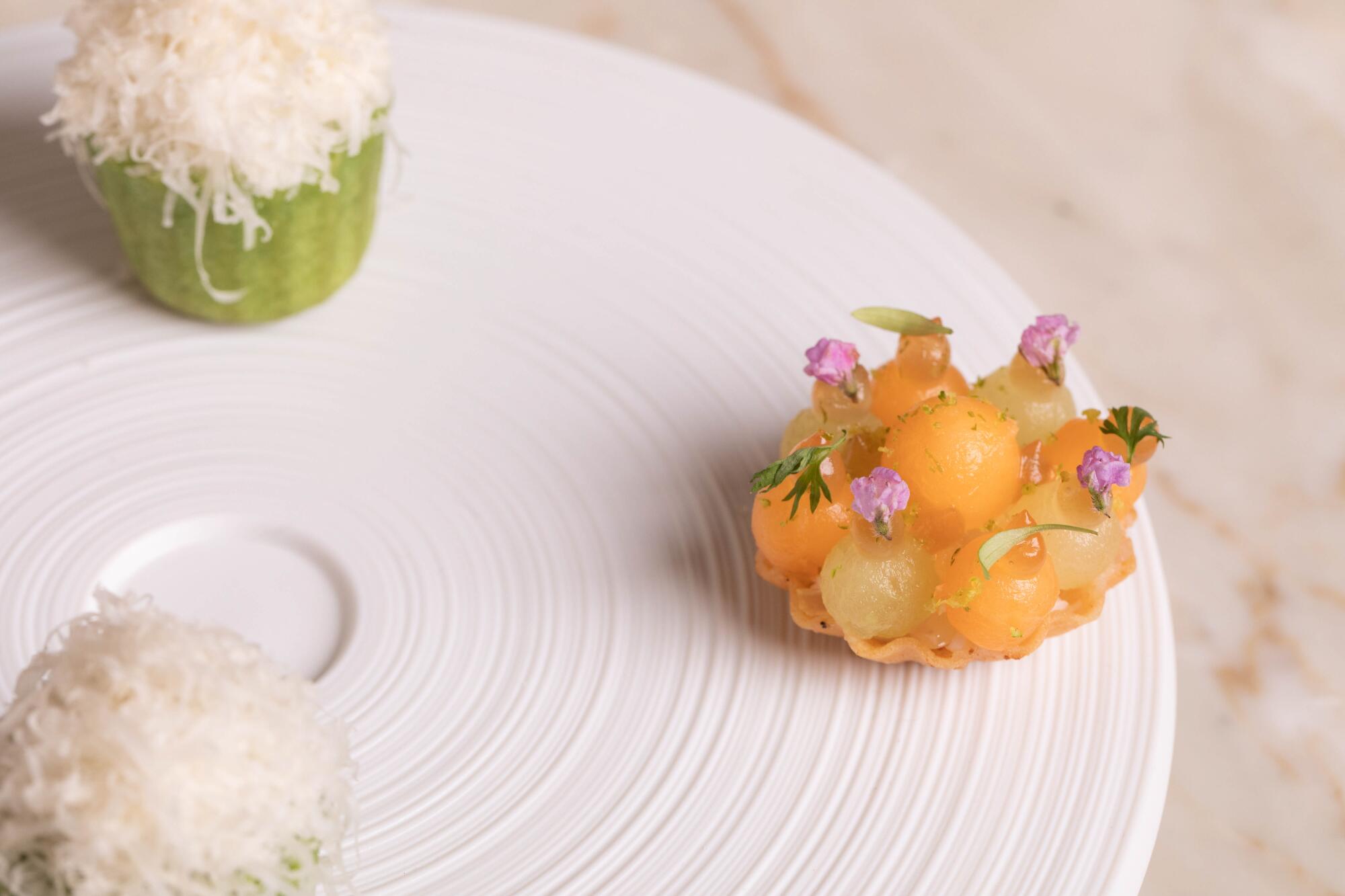
Citrin catches up with the Mélisse team at the Finley Farm stand, where Takayama and three others are sorting through French green beans. “Only the straight ones!” reminds Citrin. “Every detail counts. We used to pick through chanterelles over there for hours,” he says gesturing toward another farm booth.
Citrin’s daughter, Olivia, 24, is now involved in the restaurant’s operations. His restaurant Augie’s on Main is named after his late son, Augustin, who died of a fentanyl poisoning in 2020 and whose necklaces Citrin always wears.
“I have his guitar pick on here, which has teeth marks on it and it broke, so it looks like a broken heart,” Citrin explains, holding one of the many necklaces. “I can’t leave if I don’t have these on. Especially this one. I touch this a lot.”
Both Olivia and Augie grew up in the restaurant. “We used to have all these booths and they had tablecloths, so we’d hide under them and we’d make the servers play hide and seek,” says Olivia.
‘What’s next? What’s next?’
Though the restaurant went through several minor remodels in the first 20 years, its biggest redesign occurred in 2019, when Citrin transformed the entire space into the restaurant called Citrin and moved Mélisse into a 14-seat room that was formerly used for private dining. In August, word came that Mélisse had retained its two Michelin stars, and Citrin retained its one star.
“You’re hot one day and you’re not the next. We were always thinking, ‘What’s next, what’s next? What’s next?’ We need to keep evolving, whether it’s new plates or changing up the artwork or always trying to evolve the restaurant.”
But the evolution of Mélisse also includes the evolution of French cooking over the past 25 years. “French cooking has always been focused on the product, but I think it’s gotten much lighter. It’s always been delicate, but the sauce has gotten lighter,” says Citrin, adding that the biggest change he has seen in French fine dining is the incorporation of other cuisines. “It is much more open now than it was before. ... Japanese ingredients have become much more a part of French cuisine.”
Citrin says there’s never been a time where he didn’t want to continue.
“I see the guests who’ve come here over the years and just all the memories and everything we’ve created. It’s addictive. It’s like you want to keep doing that. You want to keep being part of people’s memories. You want to be part of their life. People I’ve never met come in here and tell me stories from eight or 15 years ago, or 20 years ago. And I just think that’s kind of an addictive feeling. It’s a powerful feeling being able to give that to people.”
More to Read
Eat your way across L.A.
Get our weekly Tasting Notes newsletter for reviews, news and more.
You may occasionally receive promotional content from the Los Angeles Times.

